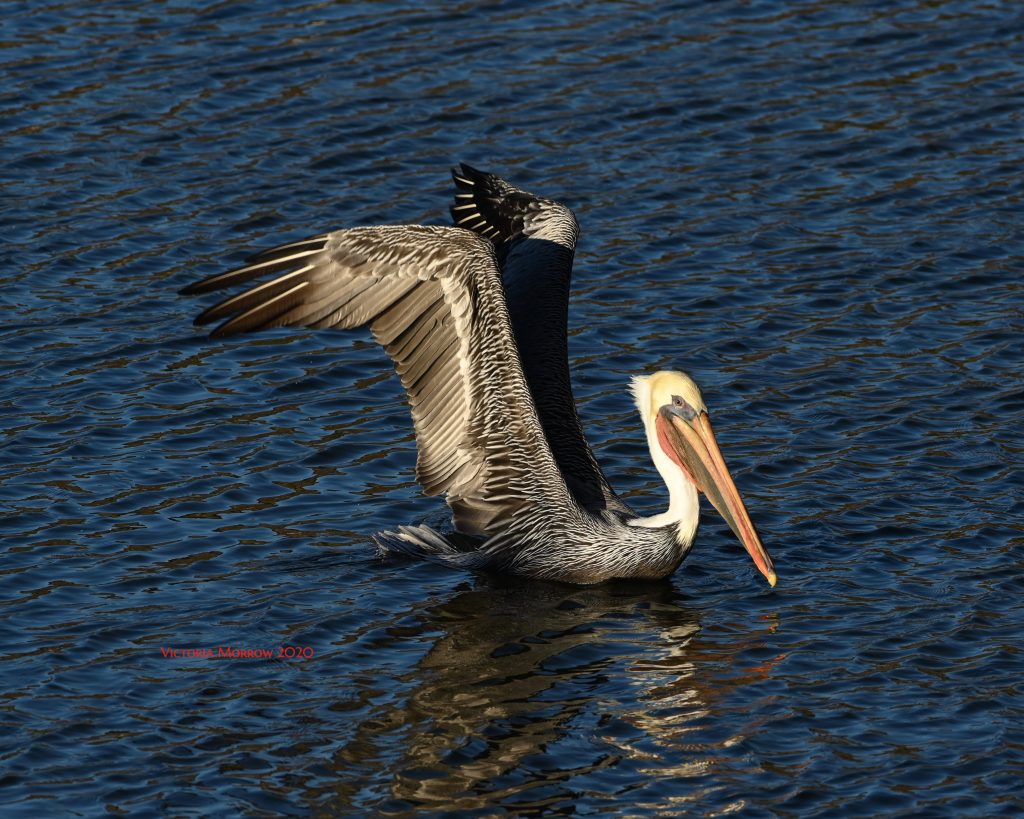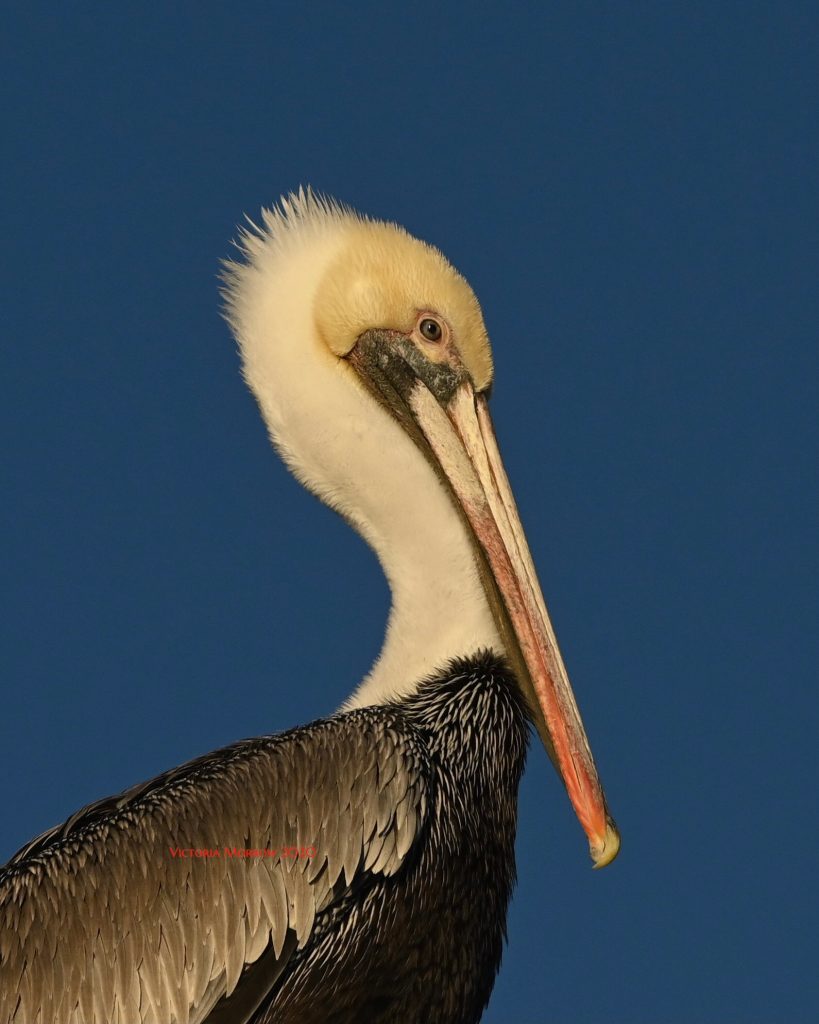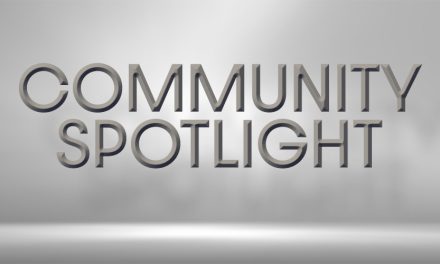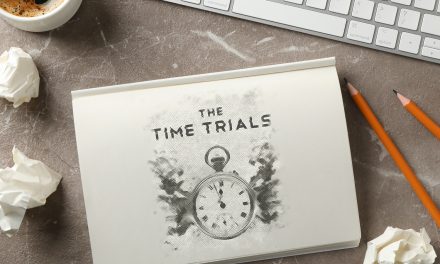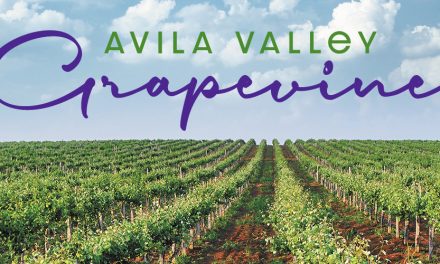California Brown Pelicans are intriguing gray-brown saltwater birds. You may catch a glimpse of a few casually floating in the estuary along the Bob Jones Pathway. Sometimes they fly beneath the estuary bridge skimming the surface of the water. They are intelligent, masterful flyers but look somewhat awkward on land. While in flight, they resemble prehistoric pterodactyls, the winged reptiles from the past. The species is unique not only in appearance but in actions as well. Thank goodness they lack the teeth that filled the pterodactyl’s long beaks over 30 million years ago. Pelicans have distinct features, which make them easily identifiable.
One of the most interesting features of a pelican is the gular pouch that dangles from the bill. Pelicans use the large stretchy pouch to capture fish. After a fish is caught, its head tilts back to drain out the water. Then it immediately gulps down the fish. Often while pelicans are draining the water from the bill, seagulls will attempt to quickly snatch the fish right out of the pouch. All is fair game in wildlife survival. Incidentally, that nifty pouch can hold 2-3 gallons of water.
Adult pelicans eat about 4 pounds of fish daily. Anchovies are a favorite. The pelican’s broad wings are 6-7 feet in length. The seabird’s wingbeats are slow and deep as they fly in V-formations or lines just above the water’s surface. To keep the mesh forming feathers in tip-top shape, they frequently preen to maintain a good seal that efficiently beads off moisture. Strong legs and fully webbed feet allow pelicans to swim well.
Interestingly, pelicans have no voice. Instead, gestures are used for communication. Nestlings possess the ability to squawk and shrill when begging for food.
If you want to see an entertaining pelican aerial show, head for the beach. Pelicans can be plentiful, especially when the sea is filled with swarming small fish, known as bait balls. That is a prime mealtime, an opportunity to witness a genuine feeding frenzy! This is when the aerodynamics of the Brown Pelican are at their finest. These acrobatic dives into the ocean are amazing to watch.
Photos courtesy of Victoria Morrow
An extremely keen eyesight allows the bird to hone in on a fish and high dive with a spectacular plunge. Those arrow-like dives can occur from as high as 65 feet. The pelican hits the water with such force that fish six feet below the surface are stunned. You may wonder how they crash-dive without injuring themselves. This is because a pelican possesses special air sacs beneath the skin that inflate just before impact, providing essential protection for internal organs.
Pelicans also tuck and twist to the left to shield their trachea and esophagus from injury. As for the pelican’s diving success, it depends on experience. Adult California Brown Pelicans obtain a catch about two-thirds of their dives. However, young pelicans have a significantly lower success rate; therefore, fewer than half survive the first year out of the nest.
Perhaps you have noticed that sometimes the pelican’s yellow head and white neck sport an additional color. During the breeding season, adult Brown Pelicans have bright red skin on their throats. California Brown Pelicans nest in colonies of up to several thousand pairs. Isolated islands free of predators are the ideal nesting locations. The remote West Anacapa and Santa Barbara Islands within the Channel Islands National Park are the breeding colonies of the California Brown Pelican. Brown Pelicans build large nest structures on the ground, in trees, or on vegetation. They normally lay three eggs, and adults share incubation duties. The parents incubate the eggs with the skin of their feet, keeping them warm and well protected.
California Brown Pelicans are a good example of how successful wildlife conservation can be. North American pelicans nearly disappeared in the late 1960s and early 70s due to pesticides entering the food chain. As a result, in 1970, pelicans were federally listed as endangered. Thankfully with the ban on DDT and the pesticide endrin, which led to thin-shelled eggs that easily broke under the weight of the parents, Brown Pelicans made a full comeback.
The varied bird population in Avila Beach is such an amazing treat! It is entertaining to observe the behaviors and view the beauty of the numerous winged residents that call Avila home as you enjoy a walk or ride along the Bob Jones Trail.



